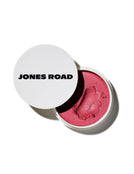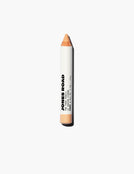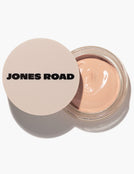Diary / Wellness / Sep 26, 2022
Understanding the Low-FODMAP Diet
Written by: Danielle Capalino
Photography by: Sarah Elliot

Do you feel like you are eating healthy foods and yet still feel like your stomach is blowing up like a balloon, or that you are running to the bathroom all day long? My practice is full of young women with food diaries that would make any nutritionist proud – loaded with fiber, whole grains, beans and lots of fruits and vegetables – a seemingly perfect spread. Yet, they suffer from IBS or IBS-like symptoms that are uncomfortable and often embarrassing.
There is a dietary approach called the low-FODMAP diet that was developed in Australia nearly a decade ago and this approach has made waves in the nutrition and medical world for alleviating these symptoms. Yes, the diet has a bad name, it is not intuitive, it takes a commitment, and it is not for everyone — but I have seen this change the lives of hundred of people, so if this resonates with you, it is worth considering.
The acronym FODMAP stands for fermentable oligo- di- mono- saccharides and polyols – quite a mouthful. I like to describe them as short-chain carbohydrates. The foods that fall into this category can be poorly absorbed in the small intestine and as a result create a slew of gastroenterological symptoms like gas, bloating, diarrhea, constipation in the millions of people with Irritable Bowel Syndrome (IBS). In fact studies show that up to 75% of IBS sufferers find relief when following a low-FODMAP diet.
The foods that are high in FODMAPs are: lactose, fructose, galactans, fructans, polyols. If you suspect a sensitivity to FODMAPs you may have a sensitivity to one, some or all of these categories.
LACTOSE
Lactose is a sugar naturally found in milk. You may be familiar with this from people are ‘lactose intolerant.’ Some of these people can tolerate yogurt, but not a glass of milk. Not all dairy is created equal, and some people with lactose intolerance are fine eating hard aged cheeses, butter and yogurt. It is possible to have hydrogen breath testing to assess for lactose intolerance.

FRUCTOSE
Fructose is a sugar naturally found in fruits. While all fruits have sugar, it only becomes a problem in those who are sensitive when the amount of fructose is greater than the amount of glucose in a given item. Some examples of high fructose fruits are: apples, pears, mangos. Some examples of low fructose fruits are bananas, oranges, blueberries. It is possible to have hydrogen breath testing to assess for fructose malabsorption.
FRUCTANS
Fructans are a carbohydrate that is found in a variety of foods including wheat, onions, and garlic. The list of other foods is long, but trying to assess sensitivity to those three is tough enough. Though wheat is high is fructans, fructans are not related to gluten (which is a protein) they just happen to exist in many of the same foods. There is no testing other than an elimination diet to test for tolerance to fructans.
GALACTANS
Galactans are a carbohydrate found primarily in beans. Again there is no test other than an elimination diet to test sensitivity to galactans.
POLYOLS
Polyols are sugar alcohols which appear in the diet naturally in certain fruits, as well as in artificial sweeteners. Naturally polyols are in stone fruits, like prunes (which is why prunes help with constipation), snow peas, and mushrooms. Polyols are also the reason why eating many sugar-free candies send people running to the bathroom.
Please remember that this diet does not exclude all of these delicious and healthy foods. It is a diet that works in three phases:
- Elimination phase – you take out all of the high FODMAP foods for 2-6 weeks to alleviate your symptoms.
- You test your tolerance to the individual groups of foods systemically to identify which group/groups of foods are your triggers.
- You personalize your diet taking into consideration which of the foods you tolerate, and which you do not.
I guide readers through this process in my book Healthy Gut, Flat Stomach, through my program “What the FODMAP?” and through my private practice. It has been a very rewarding process to see my clients change their lives and to hear from readers of the book who are also able to implement the plan.
Danielle Capalino, MSPH, RD, is a registered dietitian in New York City, providing nutritional counseling on digestive health. She is the author of Healthy Gut, Flat Stomach (named one of the top 7 wellness books of 2017 by People Magazine) and The Microbiome Diet Plan. She is a graduate of the Massachusetts Institute of Technology and the Johns Hopkins School of Public Health.
 Miracle Balm
Miracle Balm
 The Face Pencil
The Face Pencil
 What The Foundation
What The Foundation


